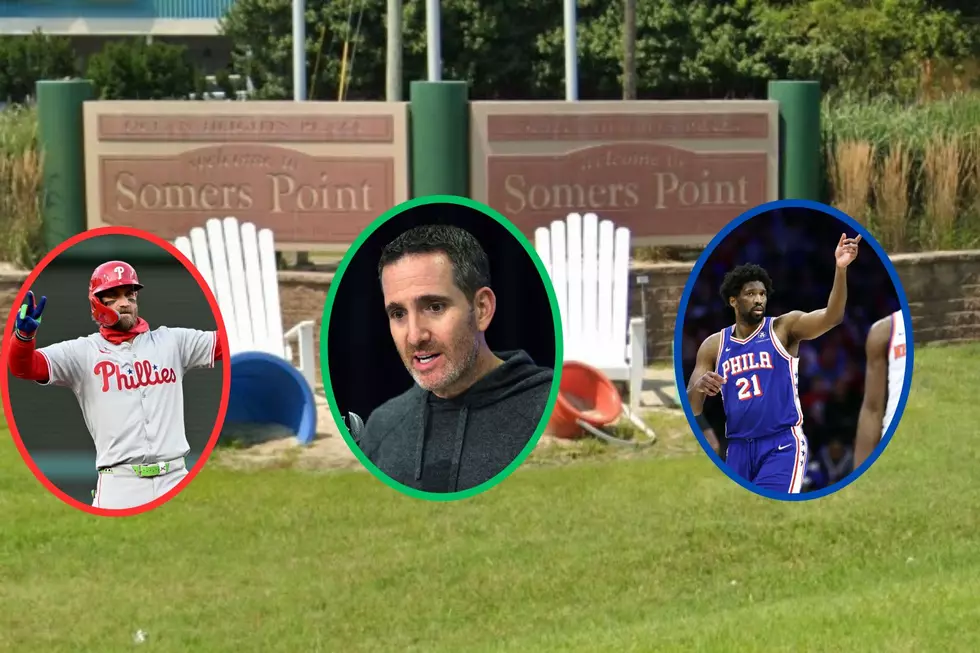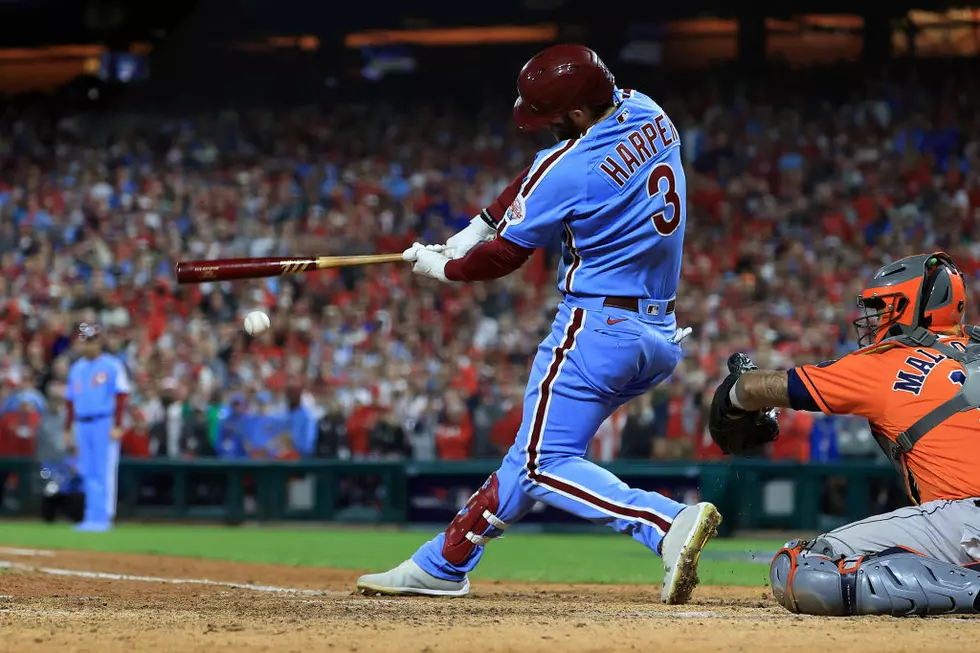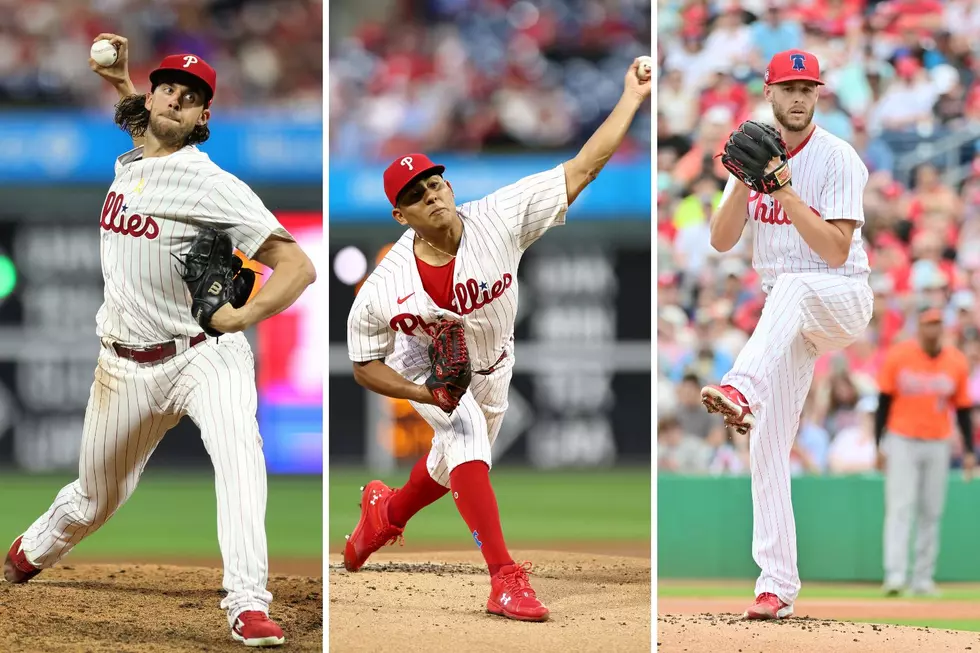
Phillies-Nationals (Game 72): Must-Know Stuff
Phillies (34-37) vs. Washington Nationals (34-35)
Last night’s 5-4 walk off win over the Nationals was uplifting for a few reasons. Maybe tops among them: if only for one game, the Phillies were able to right wrongs that had dampened their record and momentum all year.
Some notes on those below.
Most important first: they have to keep it going, starting tonight.
Howie Doin’?
Ryan Howard blasting his eighth homer of the year sent an electricity through Citizens Bank Park – even though the score only read 1-1 through two innings and, with John Lannan showing some rust, it was likely there’d be extended run for the bullpen.
That’s what Howard does for these Phillies.
Consider the team’s win-loss record when he leaves the yard. Even if you group it by periods in his career – we did by his golden years (2006-09), still slugging years (2010-11) and post-injury years (2012-13) – his power stroke's ripple is always significant.
Between 2006-09, the Phillies were 129-77 in such games. Over a full 162, that .645 winning percentage would edge the 102-win franchise record by two games.
From 2010-11, they were 45-14 when Howard homered. That’s an absurd .762 winning percentage, for a 123-win rate over a full season.
Most recently, in the two years since his Achilles surgery and arthritis diagnosis, Howard blasts have fueled the Phillies to a 16-6 record, for a .727 win rate.
Note the trend here: the more Howard’s power has declined, the higher its premium for the team.
So, if the Phillies can't have the wholesale production from Howard they're used to, they need to get it in big spots -- how they've been saying for years Howard's most likely to give it.
Protection, Please?
Stat geeks scoff at the idea of plate protection. Howard might scoff at them.
If you’re really trying to quantify Domonic Brown’s surge and its implications for the team, especially given everything we said above, check out five-hole hitters’ production throughout Howard’s career.
Year - Team OPS from No. 5 hitters - NL Rank
2012 - .760 - 8
2011 - .760 - 7
2010 - .944 - 1
2009 - .857 - 2
2008 - .866 - 2
2007 - .830 - 2
(Howard’s NL Rookie of the Year 2006 omitted because half his at-bats were from the five-hole.)
Brown this year is hitting .993 there, second in the NL to only Colorado’s Michael Cuddyer. (Behind Brown at .885 is some guy named Schierholtz. Sounds familiar...)
Michael Young was incredibly effective as a No. 5 guy, but his lack of power didn't instill the type of fear that changes the way the guy before him gets pitched to.
What a Howard-Brown tandem could be capable of is, frankly, frightening.
Load ‘em Up
Some might look at two runs from as many bases-loaded opportunities, the Phillies return for chances in the fourth and eighth innings last night, as a bit of a failure.
It’s pretty ho-hum production.
That rate, one run for every bases loaded attempt, would tie the Diamondbacks for fifth in the National League. The Braves’ 1.3 run/bases loaded attempt leads the league – and that’s from a near-half season’s worth of work.
Not surprisingly, the Phillies problem is threefold. They don’t get many chances (38 at-bats, only the Mets and Nats have had fewer in the NL), don’t cash in (.163 on-base percentage, only Washington is worse) and get them in a pretty disadvantageous scenario: with two outs.
Last night, both Delmon Young and Laynce Nix faced a bags-full chance with two outs. Twenty-one, or more than half, of the Phillies bases loaded opportunities have been with the pitcher one out from safety. Don't want that.
Thanks to better on-base skills, the Reds have had such at-bats on only 34 of their NL-leading 75 overall. No surprise, they’ve scored the most runs, because they extend the pressure situation for the pitching staff and buy themselves a mulligan – or two.
Papelbon-Bon
Game-tying, heroics-forcing, ninth-inning home run or not, Jonathan Papelbon has still been one of the most effective relievers in baseball. Maybe bar none.
His 0.70 WHIP, a huge stat for relievers, ranks second to only the Cardinals’ Edward Mujica.
His 1.71 ERA is 0.04 higher than Atlanta’s Craig Kimbrel.
He’s only walked three batters in 25 2/3 innings, for a third-best rate in the league.
And despite significantly fewer opportunities, Papelbon’s win probability added (measures how much more a team is likely to win thanks to a player’s contribution; it’s an aggregate stat, like WAR), maybe the most important stat for relievers, ranks sixth among NL relievers.
The Phillies were willing to pay $13 million a year for that.
What price, in prospects, will a trade deadline buyer set for him?
Pitching Matchup
The Phillies were lucky to miss Stephen Strasburg and Jordan Zimmermann this series – and that they get Ross Detwiler (2-4, 3.02 ERA) on Cliff Lee’s (8-2, 2.55 ERA) turn.
Detwiler has surrendered three runs or fewer in all but one of his nine starts this season. His last time out, his first off the DL (strained back muscle) lasted five innings and yielded three runs.
History says he’ll be on or off tonight. He’s 2-0 with a 0.46 ERA vs. the Phillies in three Nationals wins, and 0-4 with a 7.84 ERA in five Washington losses.
Lee’s looking for his seventh-straight win. He’s 6-0 with a 1.93 ERA in his last eight starts.
Injury Report
GM Ruben Amaro said yesterday Chase Utley could begin a rehab assignment either today or tomorrow. He also said depending on how Carlos Ruiz responded to a workout yesterday, his timetable for return could be accelerated.
The Nationals, meanwhile, are likely to get back leadoff hitter and center fielder Denard Span, who’ll take over for that guy that slammed face first into the wall on Michael Young’s triple last night and looked pretty lost at the plate. Big upgrade all around.
Span has hit.359 in 39 at-bats in his career against Philly and is 7 for 20 (.350) all-time vs. Lee.
More From 97.3 ESPN









